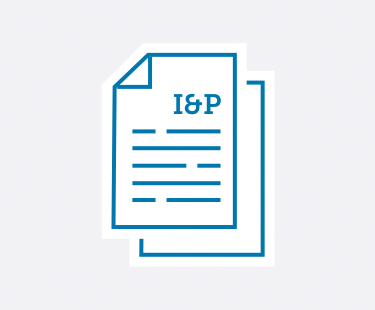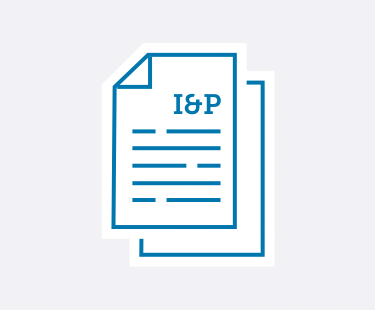

Learn practical strategies to handle emerging trends and leadership challenges in private schools.
No matter if you’re a School Head, Admission Director, Development Director, Board member, or any other private school administrator—Ideas & Perspectives®, ISM’s premier private school publication, has strategic solutions for the pervasive problems you face.
- Tuition not keeping pace with your expenses? In I&P, explore how to use strategic financial planning to create your budget and appropriately adjust your tuition.
- Enrollment dropping off? Discover how to implement the right admission and enrollment management strategies that engage your community—and fill your classrooms.
- Trouble retaining teachers? Learn how you can best support your teachers using ISM’s Comprehensive Faculty Development framework. Your faculty members will become more enthusiastic about their roles—which ultimately improves student outcomes.
- Fundraising campaigns not as successful as you’d hoped? Implement ISM’s practical advice and guidance to build a thriving annual fund, construct an effective capital campaign, and secure major donors—no matter your community size or location.
- Not sure how to provide professional development—for you and your staff? Learn ways to develop and fund a successful professional development strategy. You can improve teacher-centered satisfaction and growth, which in turn strengthens student-centered learning.
- Problematic schedule? You can master the challenges of scheduling with the help of ISM’s practical advice, based on our experience with hundreds of schools and our time-tested theories.
- And so much more.
I&P has shared targeted research, up-to-date insight, and sound theory with school leaders since 1975. More than 8,500 private school decision-makers find the answers to their schools’ administrative and governance matters in our advisory letter. We give you the strategic answers you need.
As an ISM Silver or Gold member, you not only receive issues online and in print 10 times a year, but you have access to 900+ articles in our web archive. Need help? It’s at your fingertips! Learn more and sign up for ISM's membership here.
Search
See the articles from our latest issue of Ideas & Perspectives.
Enhance the Content of Your School Newsletter
Volume 41 No. 2 // February 8, 2016
Once upon a time, school updates and “newsletters” were little more than photocopied to-do lists for parents, reminding them of upcoming deadlines and maybe including the next week’s lunch menu. Since then, the school newsletter has evolved, becoming a powerful communication and relationship-cultivation instrument.
1. Already a member? Click here to login.
2. Not a member? Click here to become a member.
3. Not sure? We'll help you figure it out.
Admission Reporting to the Board
Volume 41 No. 2 // February 8, 2016
In many schools, the Admission Director makes a regular Board report, either in person or through a written report or presentation from the Advancement Director. Therefore, we would like to explore pertinent issues to make certain that operational data does not interfere with the strategic/operations separation of powers. The Board President and School Head must ensure the Board receives the information it needs and that such information does not offend the strategic/operations separation of powers. This is particularly important as your Board might well be anxious given the economic turmoil since 2009.
1. Already a member? Click here to login.
2. Not a member? Click here to become a member.
3. Not sure? We'll help you figure it out.
The Board Profile as a Strategic Document
Volume 41 No. 2 // February 8, 2016
Of the many functions that ISM has suggested for the Committee on Trustees (COT), none is more fundamental to long-term school success than the “profiling” process. The following anti-example, published in I&P two decades ago, remains too representative even today. “Well,” the Board President said, “we now have two vacancies on the Board. Does anyone have names to suggest?” The room was silent. People looked at one another and then at the President. Finally someone said, “What about Harry Jones? He headed the Theatre Party last fall and did a great job.” Another brought up the name of the local Superintendent of Schools, soon to retire. Within five minutes, six names were being bandied about. Since two of them received more positive reactions than the rest—and because one member volunteered to call on those two people—an informal decision was made. The two would be approached about whether they would be willing to serve, if formally asked.
1. Already a member? Click here to login.
2. Not a member? Click here to become a member.
3. Not sure? We'll help you figure it out.
The Role of the Department Chair: A Middle Manager
Volume 41 No. 2 // February 8, 2016
Considering the Department Chair as a middle manager can be a difficult proposition. In many schools, the Department Chair still teaches the same number of classes as everyone else and has little real power. Or the Department Chair is, so to speak, the “union leader” of a power group that advocates for its own position within a power structure. The prerequisite for a change in the role to one of middle manager requires the entire faculty culture to be growth-focused. In such a culture and with strong Division Head leadership, the Department Chair can exercise proactive leadership that supports the school’s strategic vision largely by grounding it in a realistic application within the classroom.
1. Already a member? Click here to login.
2. Not a member? Click here to become a member.
3. Not sure? We'll help you figure it out.
Assessing Your Development Operations: How Do You Score?
Volume 41 No. 1 // January 18, 2016
An effective and productive development operation is essential to a school’s long-term ability to sustain excellence in student programs. An accountable Development Office must evaluate how well its operations reflect best practices and whether objectives are achieved. A standard metric makes this evaluation possible. The following questionnaire provides a framework for appraising your performance and reviewing the practices that define success. Development Directors can use these metrics to analyze the state of their operations and establish baselines. They suggest ways to implement best practices in your development operations, and to measure progress and communicate it to the School Head, the Board, and the school community.
1. Already a member? Click here to login.
2. Not a member? Click here to become a member.
3. Not sure? We'll help you figure it out.
Facility Planning and Future Needs
Volume 41 No. 1 // January 14, 2016
Boards and School Heads must keep their eyes on the horizon when planning for an upgrade or adaptation of an existing facility, or designing a new one. What programs and services will private-independent schools need to offer in the next 10 years to remain competitive? How do they influence the planning and design of new—or adaptation of existing—school buildings?
1. Already a member? Click here to login.
2. Not a member? Click here to become a member.
3. Not sure? We'll help you figure it out.
The End of School Leadership
Volume 40 No. 16 // December 22, 2015
In The End of Leadership,1 Barbara Kellerman writes, “Leaders of every sort are in disrepute … we don’t have much better an idea of how to grow good leaders, or of how to stop or at least slow bad leaders, than we did a hundred or even a thousand years ago … that followers are becoming on the one hand disappointed and disillusioned, and on the other entitled, emboldened, and empowered.” She continues, “When everyone is exposed to the point of being vulnerable—no matter their status or station—the gap between leaders and followers shrinks to near the vanishing point.”
1. Already a member? Click here to login.
2. Not a member? Click here to become a member.
3. Not sure? We'll help you figure it out.
Keep Track of Parent Volunteers’ Contributions
Volume 40 No. 16 // December 22, 2015
Who’s’ volunteering at your school? What are they doing? How many hours have been contributed? To provide oversight of volunteer activity, you, as Director of Parent Relations (or another administrator who oversees volunteers), need to have that information in hand. One of your responsibilities is to recruit and value parent volunteers, and maintain a reliable volunteer force. Work closely with your Parent Association leaders to ensure that your school makes the most of this invaluable resource.
1. Already a member? Click here to login.
2. Not a member? Click here to become a member.
3. Not sure? We'll help you figure it out.
The Student-Centered Department
Volume 40 No. 16 // December 22, 2015
Over time, all schools become adult-centered. Adults have all the power and students have none; faculty and administrators may stay around for three or four decades while students keep passing through. Put power and longevity together and it is clear why the evidence for adult-centeredness is so profound. Being student-centered, thus, is not a given, although it is always assumed in schools. Who would suggest otherwise? The Department Chair (or team leader) as a middle manager has a responsibility to lead a student-centered conversation. As School Head or Division Head, inspire your teams to reflect on your own department culture.
1. Already a member? Click here to login.
2. Not a member? Click here to become a member.
3. Not sure? We'll help you figure it out.
Auxiliary Income and Unrelated Business Income Tax
Volume 40 No. 16 // December 22, 2015
In 1950, Congress passed legislation to minimize unfair competition between nonprofit groups, which were exempt from paying business income tax, and for-profit businesses, which pay income tax on the profits generated by their business activities. The IRS (and subsequently the courts) scrutinizes a school’s activities according to this balance. There are two basic questions to ponder. What represents legitimate income for a nonprofit (for schools, for example, tuition, fees for services provided, investments, annual fund)? What income, if any, are schools generating that represents unfair competition with a for-profit business? The issue is to decide whether income generated by the nonprofit is a direct outcome of its “primary business” or is ancillary to it.
1. Already a member? Click here to login.
2. Not a member? Click here to become a member.
3. Not sure? We'll help you figure it out.


